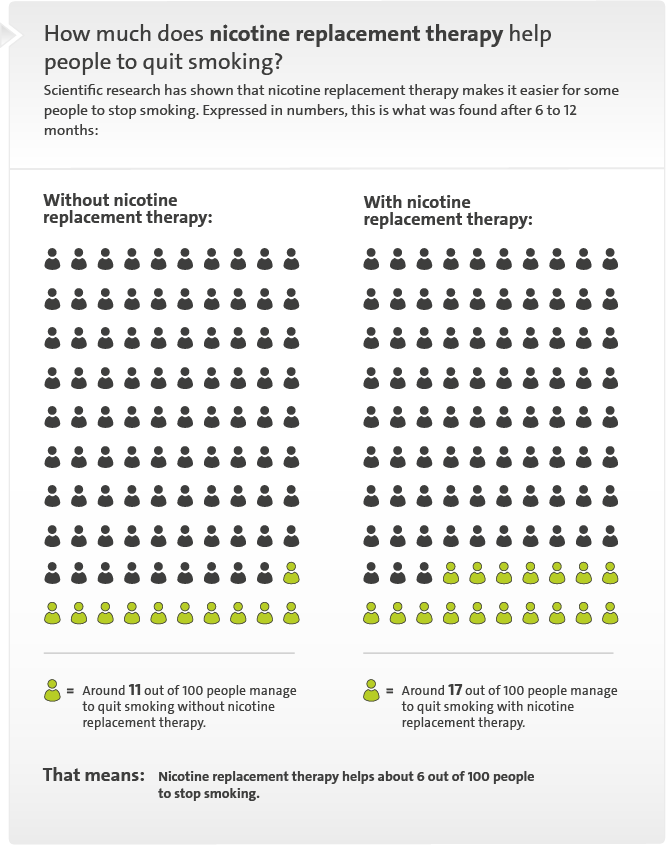Batra A, Kiefer F, Andreas S et al. S3-Leitlinie „Rauchen und Tabakabhängigkeit: Screening, Diagnostik und Behandlung“. AWMF-Registernr.: 076-006. 2021.
Chamberlain C, O'Mara-Eves A, Porter J et al. Psychosocial interventions for supporting women to stop smoking in pregnancy. Cochrane Database Syst Rev 2017; (2): CD001055.
Claire R, Chamberlain C, Davey MA et al. Pharmacological interventions for promoting smoking cessation during pregnancy. Cochrane Database Syst Rev 2020; (3): CD010078.
Hartmann-Boyce J, Chepkin SC, Ye W et al. Nicotine replacement therapy versus control for smoking cessation. Cochrane Database Syst Rev 2018; (5): CD000146.
Lindson N, Chepkin SC, Ye W et al. Different doses, durations and modes of delivery of nicotine replacement therapy for smoking cessation. Cochrane Database Syst Rev 2019; (4): CD013308.
Mills EJ, Wu P, Lockhart I et al. Adverse events associated with nicotine replacement therapy (NRT) for smoking cessation. A systematic review and meta-analysis of one hundred and twenty studies involving 177,390 individuals. Tob Induc Dis 2010; 8(1): 8.
Patnode CD, Henderson JT, Thompson JH et al. Behavioral Counseling and Pharmacotherapy Interventions for Tobacco Cessation in Adults, Including Pregnant Women: A Review of Reviews for the U.S. Preventive Services Task Force. 2015.
IQWiG health information is written with the aim of helping people understand the advantages and disadvantages of the main treatment options and health care services.
Because IQWiG is a German institute, some of the information provided here is specific to the German health care system. The suitability of any of the described options in an individual case can be determined by talking to a doctor. informedhealth.org can provide support for talks with doctors and other medical professionals, but cannot replace them. We do not offer individual consultations.
Our information is based on the results of good-quality studies. It is written by a team of health care professionals, scientists and editors, and reviewed by external experts. You can find a detailed description of how our health information is produced and updated in our methods.


